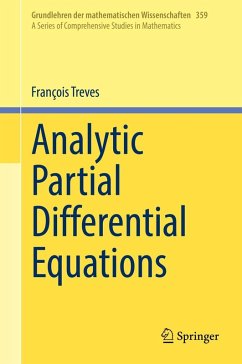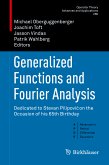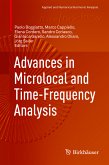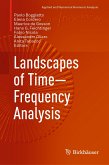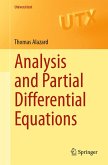This book provides a coherent, self-contained introduction to central topics of Analytic Partial Differential Equations in the natural geometric setting. The main themes are the analysis in phase-space of analytic PDEs and the Fourier-Bros-Iagolnitzer (FBI) transform of distributions and hyperfunctions, with application to existence and regularity questions.
The book begins by establishing the fundamental properties of analytic partial differential equations, starting with the Cauchy-Kovalevskaya theorem, before presenting an integrated overview of the approach to hyperfunctions via analytic functionals, first in Euclidean space and, once the geometric background has been laid out, on analytic manifolds. Further topics include the proof of the Lojaciewicz inequality and the division of distributions by analytic functions, a detailed description of the Frobenius and Nagano foliations, and the Hamilton-Jacobi solutions of involutive systems of eikonalequations. The reader then enters the realm of microlocal analysis, through pseudodifferential calculus, introduced at a basic level, followed by Fourier integral operators, including those with complex phase-functions (à la Sjöstrand). This culminates in an in-depth discussion of the existence and regularity of (distribution or hyperfunction) solutions of analytic differential (and later, pseudodifferential) equations of principal type, exemplifying the usefulness of all the concepts and tools previously introduced. The final three chapters touch on the possible extension of the results to systems of over- (or under-) determined systems of these equations-a cornucopia of open problems.
This book provides a unified presentation of a wealth of material that was previously restricted to research articles. In contrast to existing monographs, the approach of the book is analytic rather than algebraic, and tools such as sheaf cohomology, stratification theory of analyticvarieties and symplectic geometry are used sparingly and introduced as required. The first half of the book is mainly pedagogical in intent, accessible to advanced graduate students and postdocs, while the second, more specialized part is intended as a reference for researchers.
This book provides a unified presentation of a wealth of material that was previously restricted to research articles. In contrast to existing monographs, the approach of the book is analytic rather than algebraic, and tools such as sheaf cohomology, stratification theory of analyticvarieties and symplectic geometry are used sparingly and introduced as required. The first half of the book is mainly pedagogical in intent, accessible to advanced graduate students and postdocs, while the second, more specialized part is intended as a reference for researchers.
Dieser Download kann aus rechtlichen Gründen nur mit Rechnungsadresse in A, B, BG, CY, CZ, D, DK, EW, E, FIN, F, GR, HR, H, IRL, I, LT, L, LR, M, NL, PL, P, R, S, SLO, SK ausgeliefert werden.
Es gelten unsere Allgemeinen Geschäftsbedingungen: www.buecher.de/agb
Impressum
www.buecher.de ist ein Internetauftritt der buecher.de internetstores GmbH
Geschäftsführung: Monica Sawhney | Roland Kölbl | Günter Hilger
Sitz der Gesellschaft: Batheyer Straße 115 - 117, 58099 Hagen
Postanschrift: Bürgermeister-Wegele-Str. 12, 86167 Augsburg
Amtsgericht Hagen HRB 13257
Steuernummer: 321/5800/1497
USt-IdNr: DE450055826
Bitte wählen Sie Ihr Anliegen aus.
Rechnungen
Retourenschein anfordern
Bestellstatus
Storno

